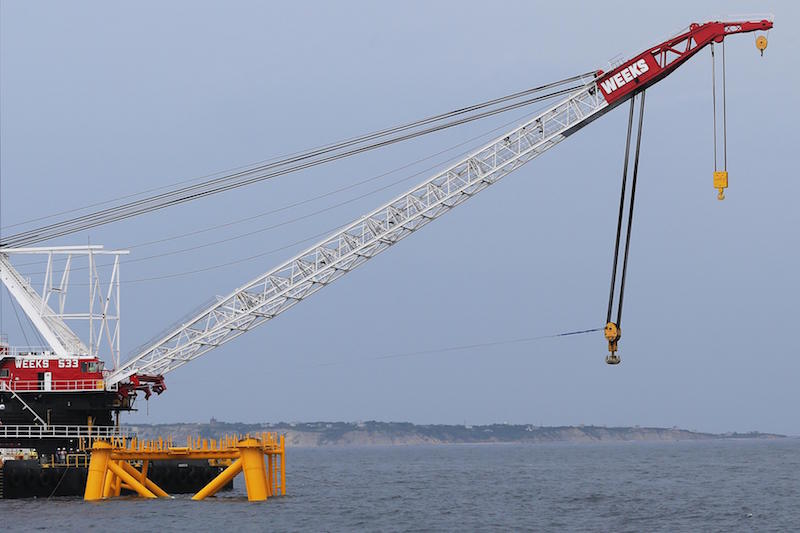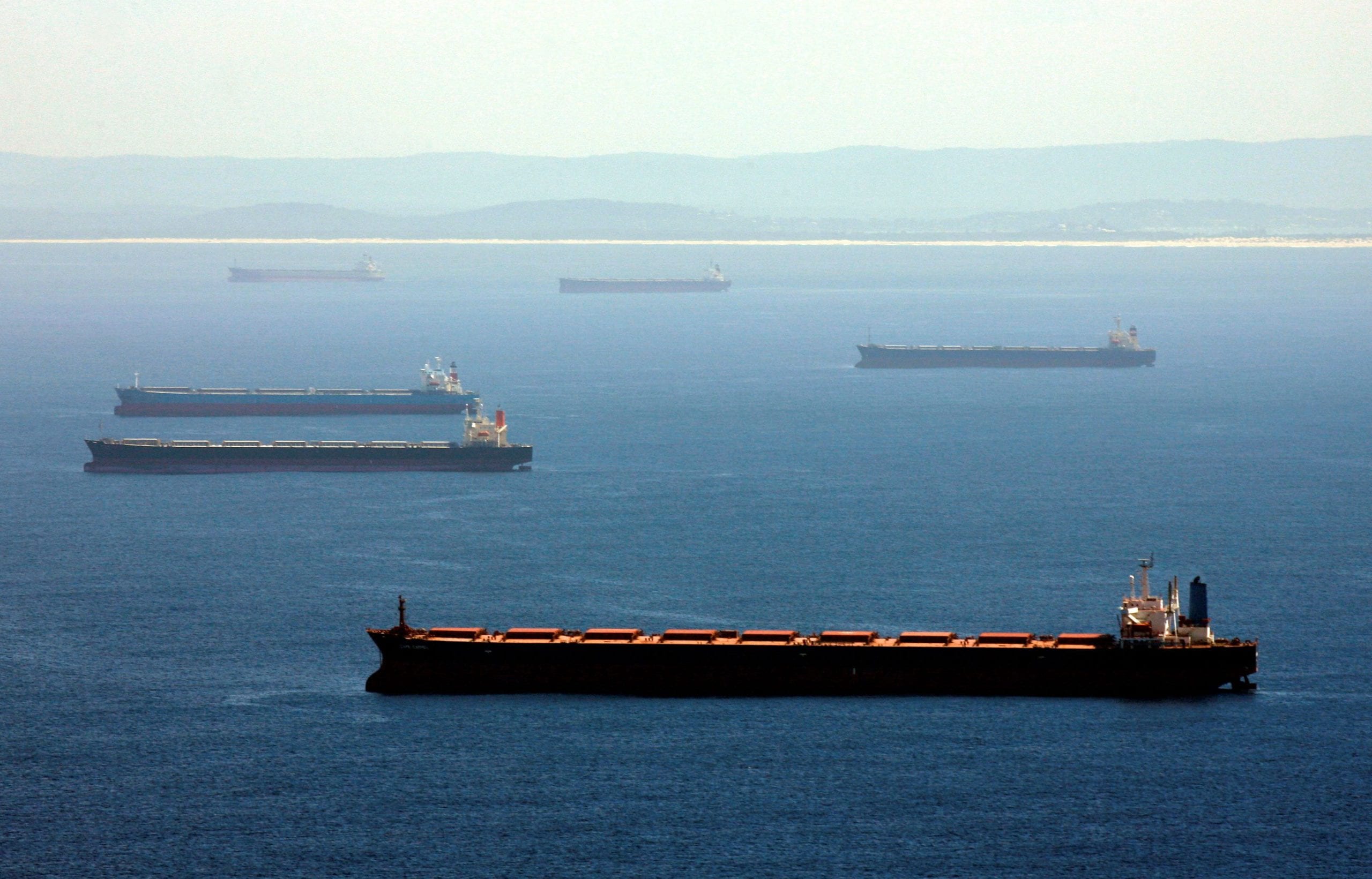A crane hangs over the first jacket structure installed to support a turbine for a wind farm in the waters of the Atlantic Ocean off Block Island (rear), Rhode Island July 27, 2015. REUTERS/Brian Snyder
 By Richard Valdmanis
By Richard Valdmanis
NEW SHOREHAM, Rhode Island, July 27 (Reuters) – Rhode Island’s Deepwater Wind began installing the foundations for North America’s first offshore wind farm on Monday, a milestone the company says could pave the way for an industry long established in Europe but still struggling with opposition in the United States.
The 30-megawatt wind farm, which will include five turbines located three miles (4.8 km) off the coast of the bucolic summer tourist destination of Block Island, will take more than a year to build and is scheduled to produce electricity for the tiny island community and the mainland by the end of next year.
“Our belief is once Block Island is up and running, it will bring offshore wind from theory to reality in the United States and open up opportunities to build larger projects,” said Jeffrey Grybowski, Deepwater Wind’s CEO.
Representatives from the U.S. Department of the Interior, the Bureau of Ocean Energy Management and environmental organizations toured the offshore construction site in overcast conditions on Monday morning, as vessels hauled the giant steel foundations into place.
Offshore wind projects have been delivering power in Europe since the 1990s, with nearly 2,500 turbines connected to the grid, but they have struggled to gain a foothold in the United States due to worries about cost, the aesthetics of towering wind turbines within view of the coasts and the impact on birds and whales.
A rival project, Cape Wind’s proposed 130-turbine wind farm off Nantucket Sound, for example, was for years expected to be America’s first such project but stalled in part due to a lack of local support. Other offshore wind projects are in limbo off Delaware, New Jersey and New York.
Deepwater’s project fits a different mold, according to Grybowski and the project’s backers, French bank Societe Generale and Ohio-based Key Bank: It was relatively small and therefore easier to finance and is set in a location that has substantial built-in government and local support.
“Rhode Island was very forward-thinking and had designated a specific development area,” said Alexander Krolick, Societe Generale’s energy project finance director for the Americas. SocGen and Key Bank have provided about $300 million for the project, according to Deepwater, which is based in Providence.
Block Island was chosen as a wind power site by the state in 2007 in part as a solution to the island’s own energy woes: Its 1,000 residents have for years relied on costly diesel-fired generators for electricity. Once the wind farm starts up, prices will drop 40 percent, according to a study by the Block Island Utility Task Group.
“We have some of the country’s highest electricity prices,” said David Kane, who retired to the island a few years ago. “This is going to help us a lot.”
Britta Schulte, a German tourist who was visiting Block Island’s Southeast Light House on a bluff overlooking the work site on Monday, said she did not expect the wind turbines to create an eyesore for vacationers.
“It will look fine. It will still be beautiful,” she said. “Besides, I think it is about time America starts catching up with Europe on wind anyway.”
POWER TO BE SENT TO MAINLAND
About 90 percent of the wind farm’s power will be shipped to Rhode Island’s mainland via an undersea cable where utility National Grid will buy it for 26 cents/kwh and mix it into the rest of the state’s supply, which generally ranges between 6 and 10 cents/kwh. Although it will account for only 1 percent of the state’s power supply, the higher cost represents the industry’s biggest challenge.
“Everybody shares the view that we need to make progress to decrease the cost,” said Jerome Deflesselles, Societe Generale’s head of renewable origination for Europe. He said more efficient turbines and cheaper construction methods could help offshore wind compete with traditional power within about five years.
The foundations for Deepwater’s wind turbines were produced in Louisiana and will be fixed with pilings penetrating more than 150 feet (46 m) into the sea floor over the next few months. Deepwater said it had agreed to do the pile driving only when migrating whales are not in the area.
The towers and turbines, produced by Alstom in France, will be installed next summer and fall.
Deepwater said if the project is successful, it could pave the way for expansion. It holds a 30-year lease on a parcel in federal waters about 15 miles (24 km) southwest of Martha’s Vineyard with room for as many as 250 turbines. (Editing by Ken Wills and Cynthia Osterman)
(c) Copyright Thomson Reuters 2015.

 Join The Club
Join The Club











